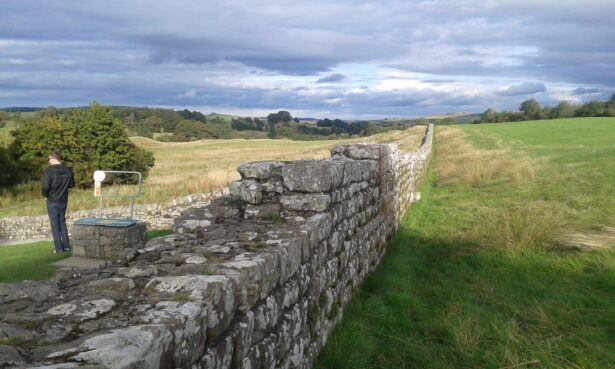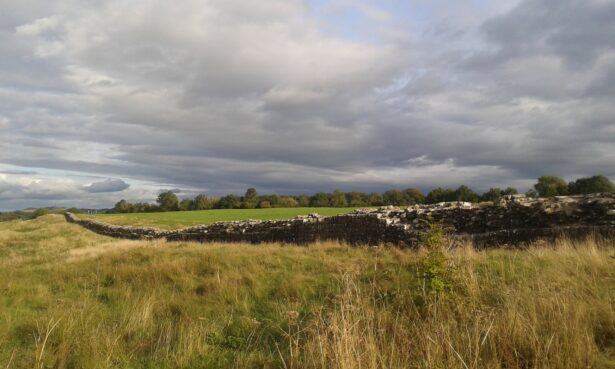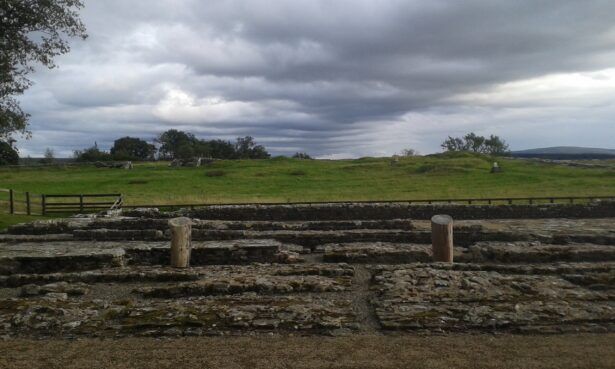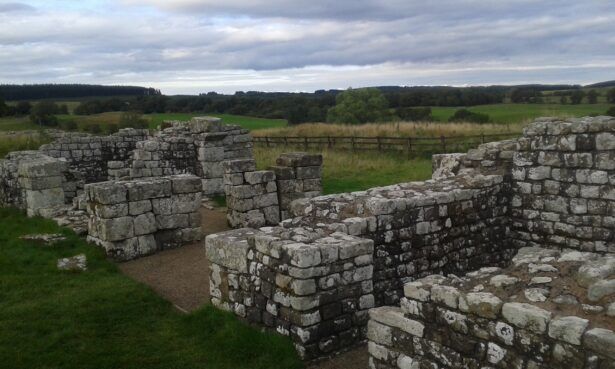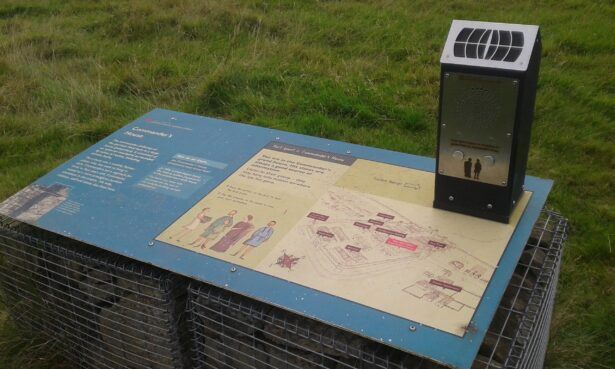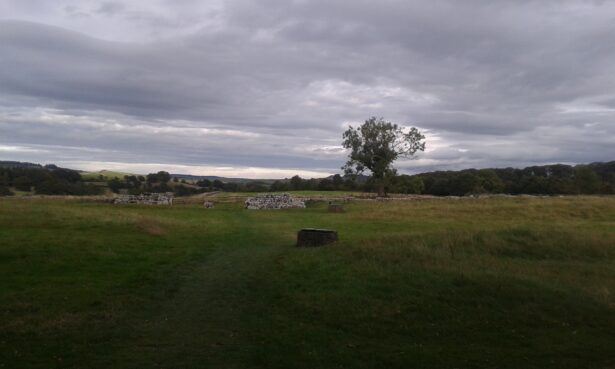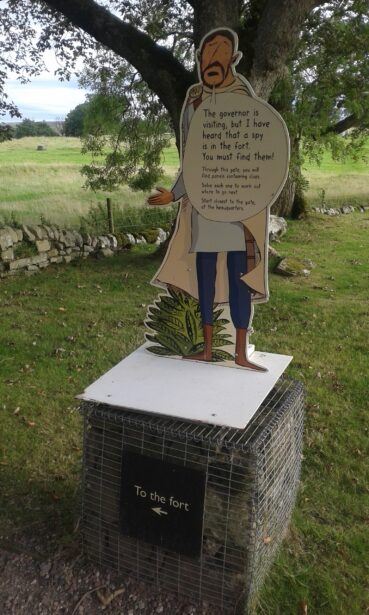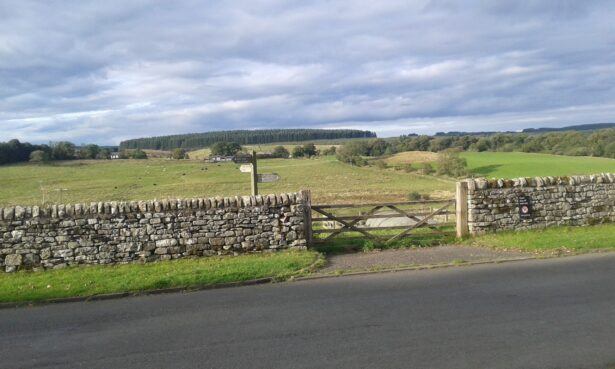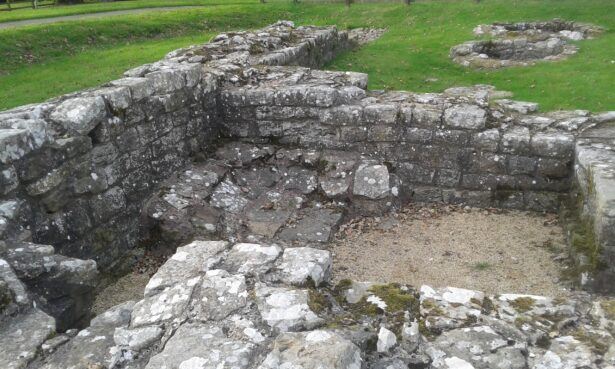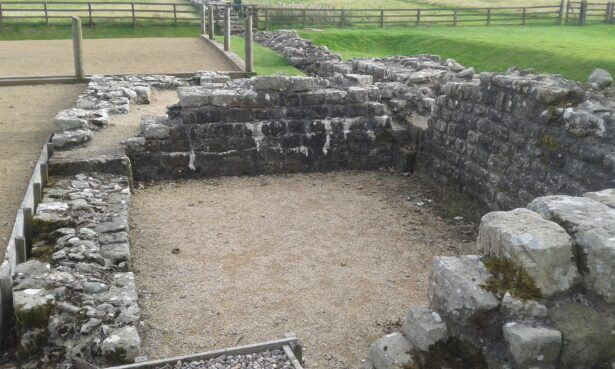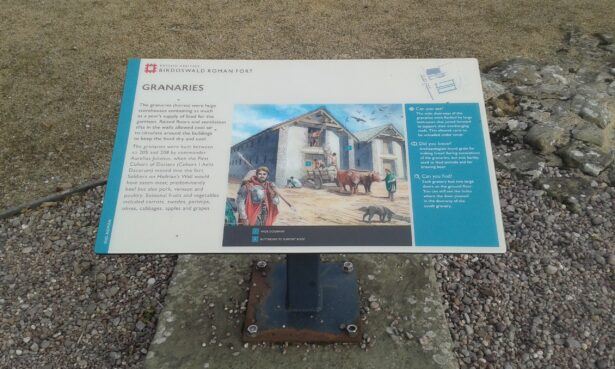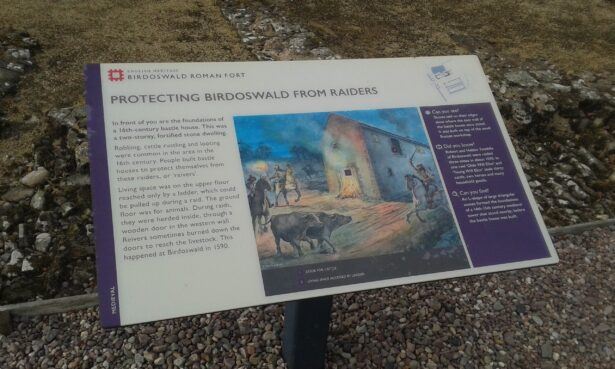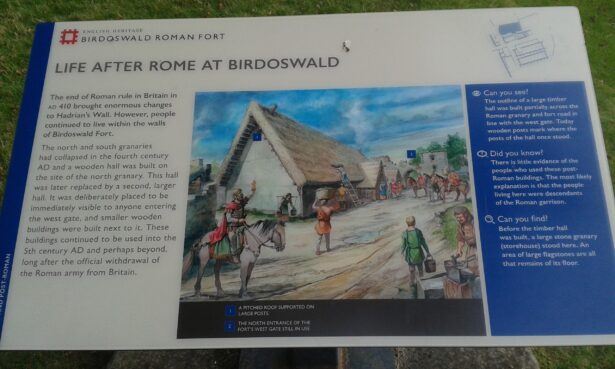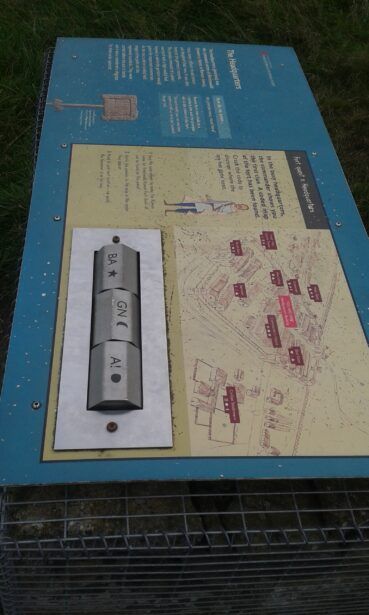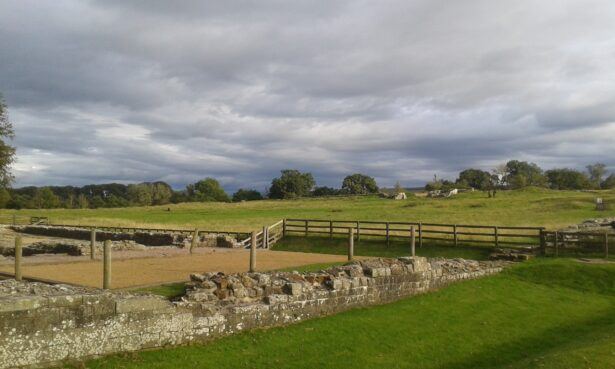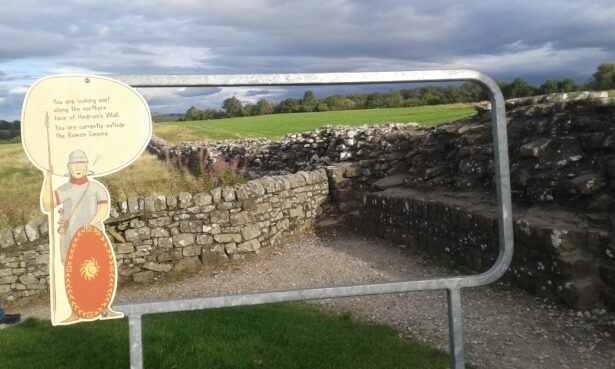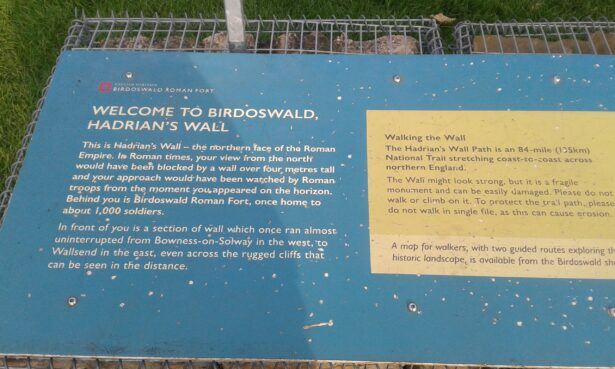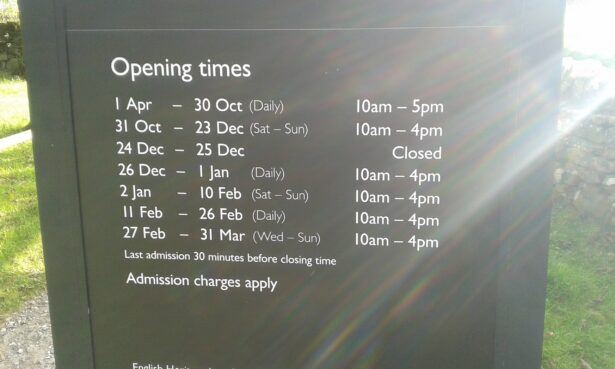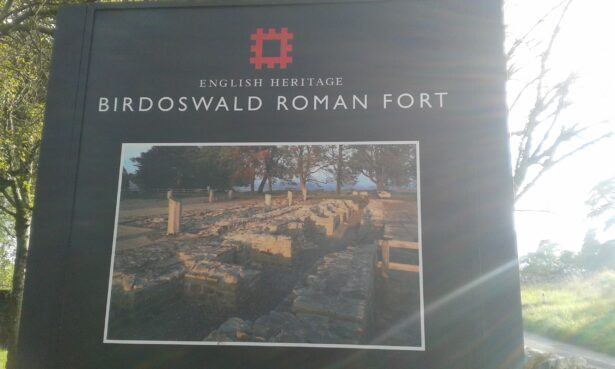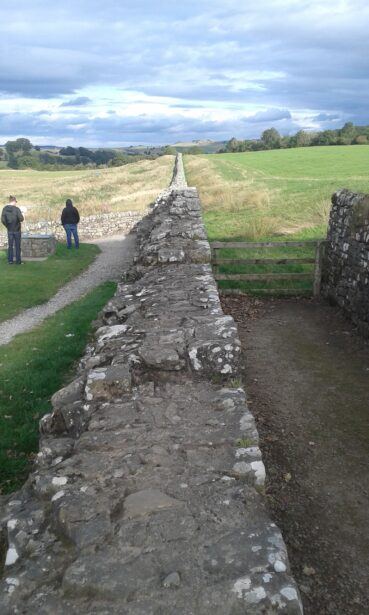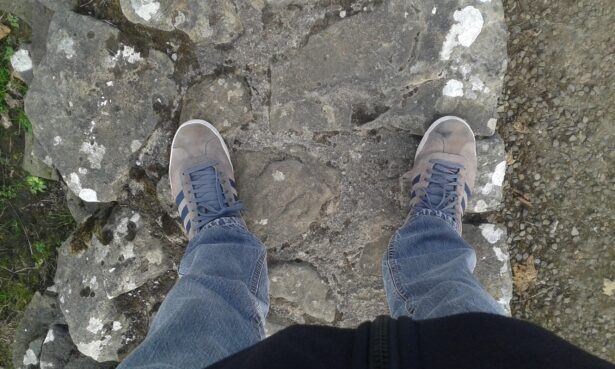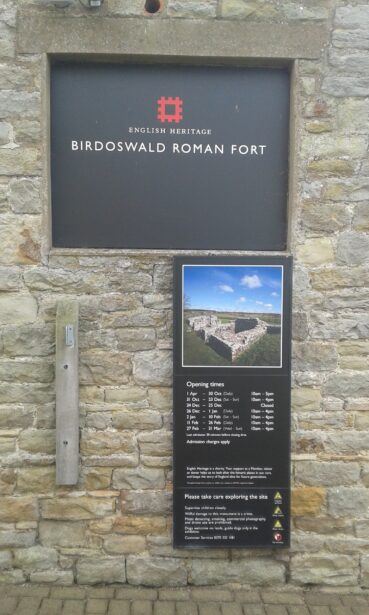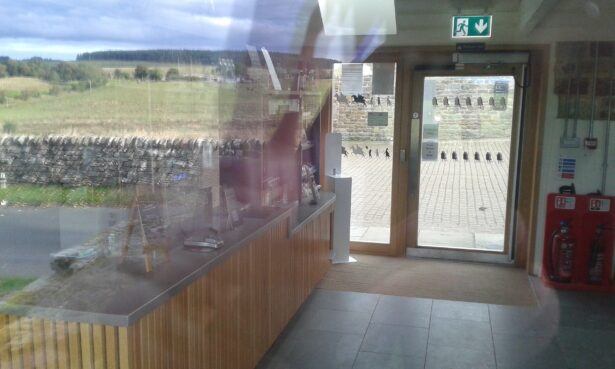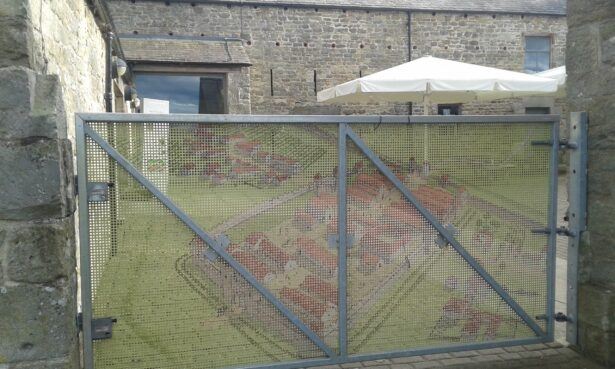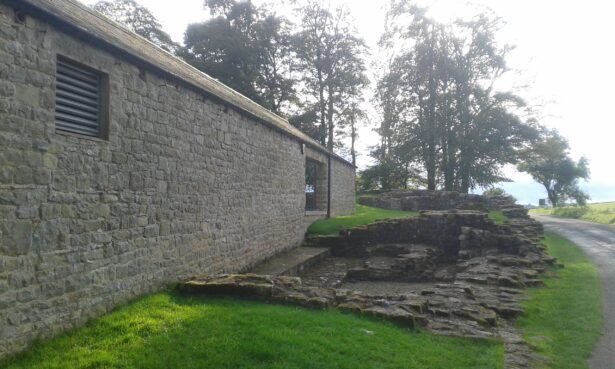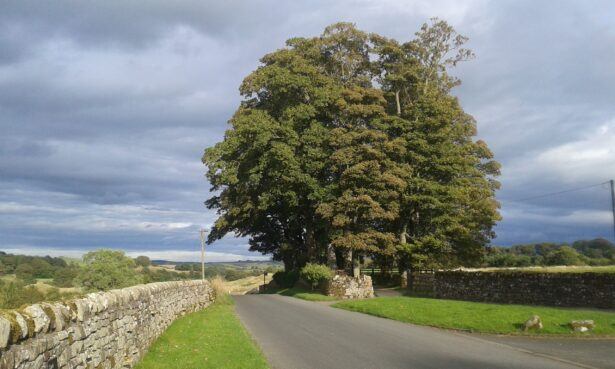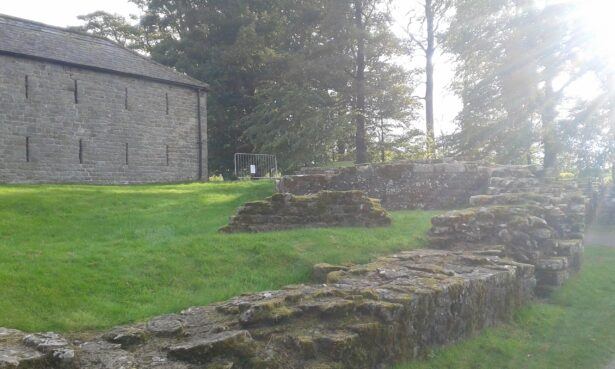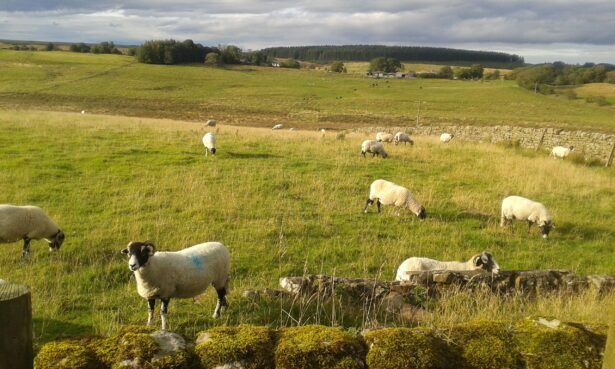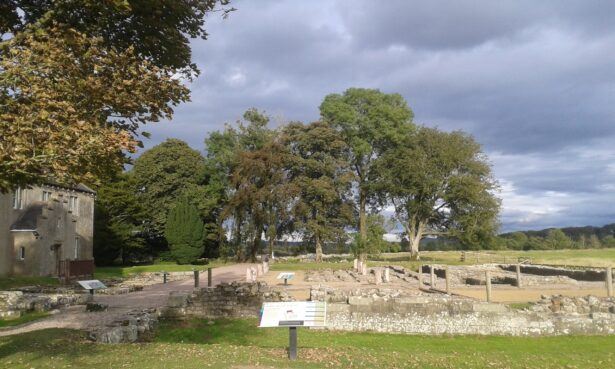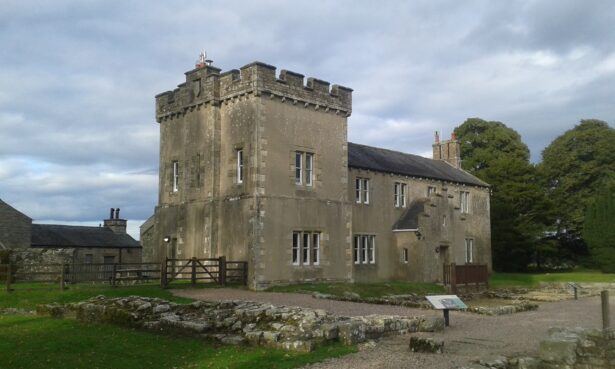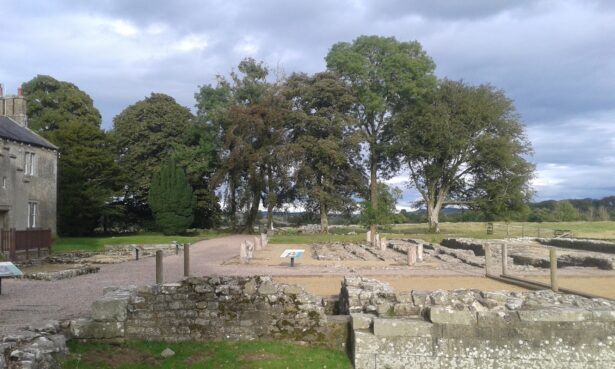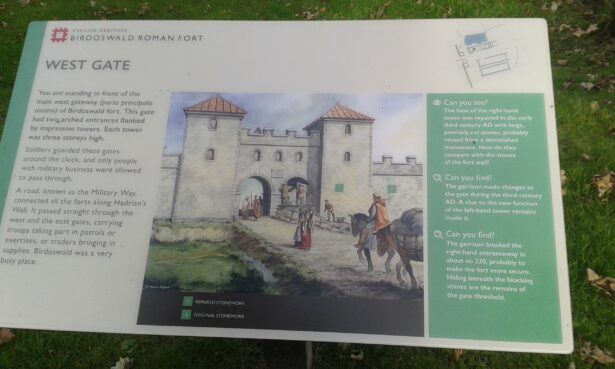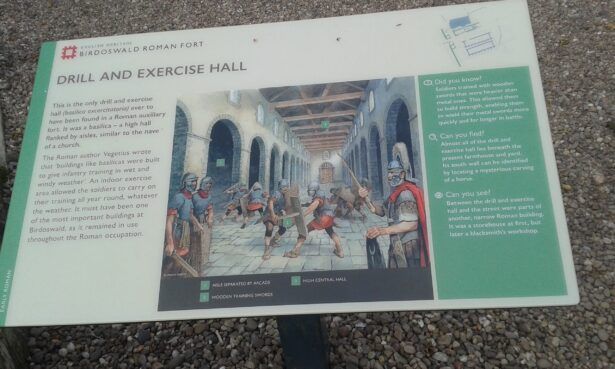“After all, you’re my Wonderwall” – Noel Gallagher.
In 2022, I finally stopped and visited Hadrian’s Wall (Haidy’s W). I had of course passed it manys a time but this was my first time to stop, walk it, stand on it, understand it and backpack it! This is NOT the border between England and Scotland however, which is often assumed! It is way older than that – it is a wall in Northern England which was originally built to be a wall/border between Roman Britain and what is now the very north of England and all of Scotland
What is Hadrian’s Wall?
Hadrian’s Wall is a Roman fortification that stretches across Northern England. It was built during the rule of the Roman Emperor Hadrian in the 2nd century AD and served as a defensive barrier marking the northern limit of the Roman Empire in Britain. Lots of it still remains and you can backpack any brick of it and say you have backpacked it. We chose to hire a car and drive to the Birdoswald part. It was easy to drive to, not far from the current England to Scotland border, and near Gretna.
Some Information on Haidy’s W
Historical Context:
Built between AD 122 and 128, the wall was constructed after Emperor Hadrian visited Britain in AD 122. Its purpose was to control movement and trade and protect Roman Britain from the tribes in what is now Scotland.
Location:
The wall stretches approximately 73 miles (117 kilometers) across the width of northern Britain, from Wallsend (Segedunum) on the River Tyne near the North Sea in the east to Bowness-on-Solway on the Irish Sea in the west. I backpacked to Hadrian’s Wall when touring Newcastle, Sunderland and Gateshead.
Construction:
Originally planned to be made of stone for most of its length, some sections were built using turf. The height of the wall ranged from 10 to 20 feet (3 to 6 meters), with a width of about 8 feet (2.4 meters).
It was reinforced by milecastles (small fortlets every Roman mile), watchtowers, and larger forts, like Birdoswald, Housesteads, and Vindolanda, which housed Roman garrisons.
Defensive and Administrative Role:
The wall served as both a military defense and a means of controlling trade and immigration. Roman soldiers stationed along the wall monitored movement, collected taxes, and enforced Roman law.
Gates along the wall allowed for controlled passage of people and goods between Roman Britain and the northern tribal lands.
Legacy:
After the end of Roman rule in Britain around AD 410, the wall fell into disrepair. Over centuries, stones were taken from it for building materials, though significant portions remain today.
In 1987, Hadrian’s Wall was designated a UNESCO World Heritage Site. It is part of the “Frontiers of the Roman Empire” listing, which recognizes it as one of the most significant Roman remains in Europe.
Tourism and Archaeology:
Today, Hadrian’s Wall is one of Britain’s most famous historical landmarks and a popular destination for hiking, archaeological tours, and history enthusiasts. Many of the forts and museums along the wall, such as Vindolanda and Housesteads, offer insights into Roman life on the frontier.
Significance:
Hadrian’s Wall represents the might of Roman engineering and their ability to impose control over vast territories. It is a symbol of the empire’s reach and the complex relationships between Romans and local British tribes. The wall’s remnants continue to be a testament to Rome’s influence in shaping British history.
My Journey To Birdoswald
To visit Birdoswald Roman Fort, which is part of Hadrian’s Wall in Northern England, here are the steps you can follow:
1. Getting To Birdoswald
By Car: Birdoswald Roman Fort is located in Cumbria, near the town of Brampton. It’s accessible via the A69 road from Carlisle or Newcastle. From Carlisle, it’s about a 30-minute drive. This is what we did. Use the postcode CA8 7DD for navigation.
By Train: The nearest railway stations are Brampton and Haltwhistle. From there, you can take a local bus or taxi to Birdoswald.
By Bus: The AD122 Hadrian’s Wall Country Bus runs along the Hadrian’s Wall route during the summer months, providing access to many of the wall’s key sites, including Birdoswald.
Walking/Cycling: If you are hiking the Hadrian’s Wall Path or cycling the Hadrian’s Cycleway, Birdoswald is an excellent stop along the way.
2. Opening Hours
- Check the official English Heritage website for the most up-to-date opening times and any seasonal variations. I was there in September 2022, those hours are in my photo below.
- The site is generally open year-round, though hours can vary by season. Birdoswald Fort often closes earlier during the winter months.
3. Admission
- There is an admission fee for entry to the fort and visitor center. Members of English Heritage and National Trust may get free or discounted entry.
- You can buy tickets online in advance through the English Heritage website or at the site.
4. Facilities
- Birdoswald has a visitor center with information about the history of the fort and Hadrian’s Wall.
- There is a café on-site, offering refreshments.
- Parking and restroom facilities are available.
5. Things to Do
- Explore the Roman fort ruins and learn about the soldiers who once guarded Hadrian’s Wall.
- Walk along well-preserved sections of Hadrian’s Wall near the fort.
- Enjoy the stunning views over the River Irthing and the surrounding countryside.
- Participate in guided tours or educational activities (check in advance if available).
6. Nearby Attractions
- Housesteads Roman Fort and Vindolanda are other notable Roman sites along Hadrian’s Wall, both of which are a short drive or bus ride away from Birdoswald.
- Gretna, where you can married on the day and whackpack into Scotland!
Planning Tips:
- If you’re visiting in the summer, plan to spend more time walking along the wall to other points of interest.
- Weather can be unpredictable, so bring appropriate gear if you plan to walk or spend time outdoors.
- Go on a Sunday or after hours, as then parking is free.
We got snap happy, here are some more photos of my time backpacking Birdoswald, Hadrian’s Wall…
Here are some videos I made at Haidy’s W:

 At Birdoswald
At Birdoswald